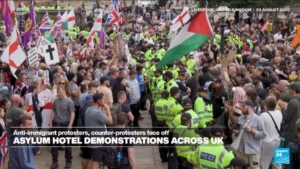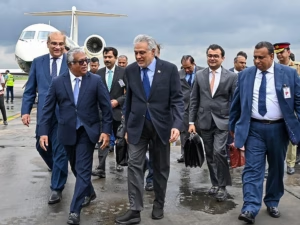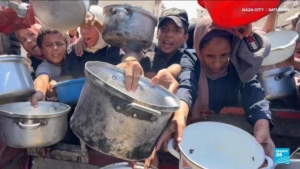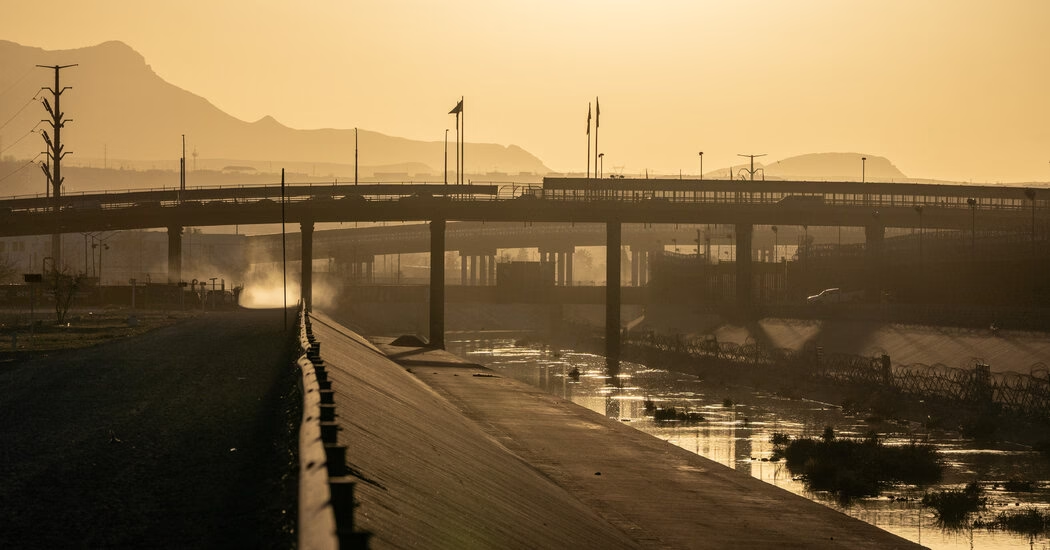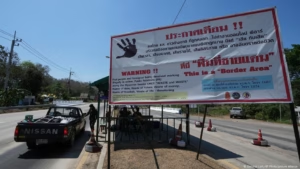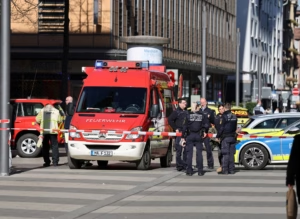On the eve of a looming deadline for President Trump to impose tariffs on Mexico, the situation on the Mexican side of the border has shifted dramatically: the migrants are no longer there. Shelters that overflowed are now almost empty, and areas teeming with people from all over the world are desolate. The border itself, where migrants once set up camp just feet from the towering wall, is littered with remnants of lives interrupted. As the Rev. William Morton, a missionary at a Ciudad Juárez cathedral that provides free meals to migrants, summed up the situation, “All that is over. Nobody can cross.”
The U.S. Department of Homeland Security Secretary, Kristi Noem, announced that Customs and Border Protection had intercepted only 200 individuals at the southern border the previous Saturday, the lowest number in over 15 years. Despite the drop in numbers, Trump credits his strict immigration policies for the decline, even as he plans to send more combat troops to reinforce the border measures he refers to as defending against an invasion.
Analysts, however, argue that Mexico’s concerted efforts to restrict migration, both at the border and throughout the country, have led to tangible results. In response to the Trump administration’s threat to levy 25-percent tariffs on Mexican exports, Mexico was galvanized into action, leveraging its own newfound bargaining power. The Mexican government has significantly stepped up checks on migration through visa restrictions, disbanding migrant caravans, and relocating migrants from regions such as Venezuela to remote parts of southern Mexico. Since last spring, Mexican authorities have apprehended more people than their U.S. counterparts every month, and now the influx at the border is nearly at a standstill.
Migrants who do make it to the border are no longer attempting to cross, according to shelter operators, and the invoices of empty shelters along the Mexican border cities serve as a testament to the migrant shutdown. The number of people detained trying to cross the border had been plummeting even before Trump took office, with many awaiting appointments through CBP One, an application that allowed people to schedule asylum appointments with authorities rather than attempt to cross.
The shelter scene is uniformly bleak: tables empty at meal times, bunk beds unused. Even after Trump’s cancellation of the CBP One app on his first day, people seem to have given up and headed south, settling in Mexico City or the southern part of the country. Shelters once bustling with migrants now house only a few, and those who remain have been there since Trump’s inauguration. The lack of support from international agencies amplified by Trump’s aid freeze only adds to the uncertainty looming over the border shelters.
Mexico’s military has been deployed to reinforce efforts to curb migration, with both the presence of national guardsmen and checkpoints being established along the border. While the effect of the military is debated, it is evident that the real efforts to control migration are happening in the southern parts of Mexico, where few migrants are entering, and those who do face a narrow passage limited by the potential for deportation. Migrants now are largely those from places they cannot return to, seeking refuge and asylum in Mexico or biding their time.
In Ciudad Juárez, shelters are closing, from 34 down to 29, a reflection of a significant drop in arrivals and diminishing support from international organizations. The decline in migration presents a new challenge – uncertainty. Will the current subdued situation persist, or is it merely a pause until conditions improve? These questions only add to the uncertainty felt by shelter operators and the diminishing international support under the current administration.
Source: https://www.nytimes.com/2025/03/03/world/americas/mexico-border-migration-trump-tariffs-deadline.html
